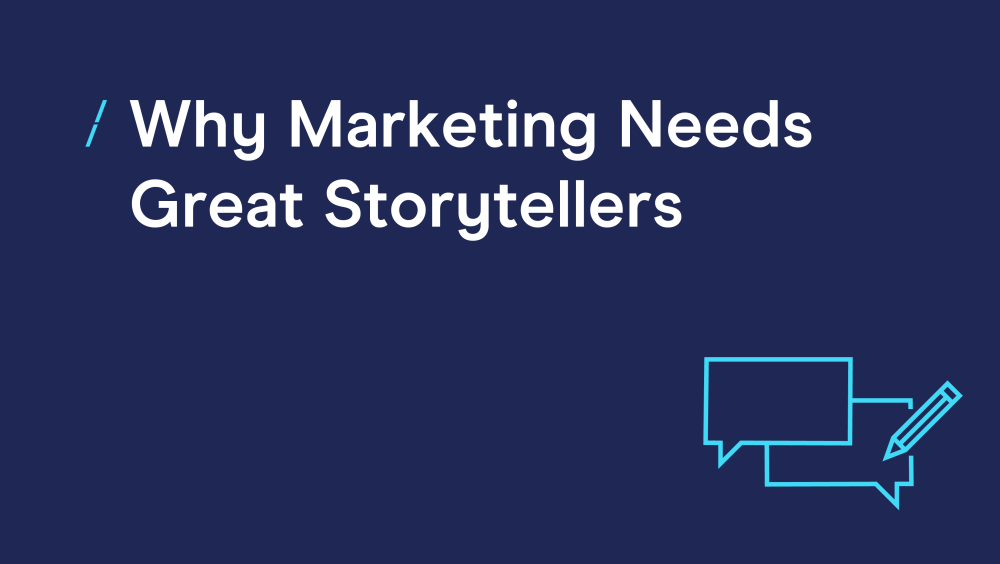Do you have a great storyteller in your business? More importantly, do you have one in your sales team or marketing department? If not, it might be time you recruited one. Fortunately there are now quite a lot of them about. Type "Storyteller" into your LinkedIn search box and you'll be rewarded with 14,386 results. That's a lot of storytellers.
A growing number of professionals operating within just about every business sector now describe themselves as a 'Corporate Storyteller', 'Story Strategist', or 'Chief Storyteller'. The best of these have the ability to do more than write a good sales pitch, they can create a great selling story. The question is; what's the difference between a pitch and a story?
A good sales pitch generally explains how the features, advantages and benefits of a particular product or service save the customer a combination of time, effort and money, or delivers a better experience. In most cases the sales pitch will be based upon a clear rationale that informs and educates using facts, figures, anecdotes, case studies and presentational language.
Storytelling applies a far more humanised approach that aims to win the hearts as well as the minds of the audience. When an understanding of great storytelling is combined with a solid sales structure, it produces a narrative that is visual, emotional and compelling. As a result, a great selling story has the potential to engage, inspire and persuade in a way that more traditional sales pitches often fail to do. A sales pitch might make your customer 'think'. But your selling story will make them 'feel'.
What both the sales pitch and the selling story share in common is that they work best in face-to-face situations, such as sales meetings, formal client presentations and seminars. When you write copy for direct and digital marketing, shorter messages crystallising your proposition clearly and succinctly are more appropriate.
The key components of an effective selling story
There is nothing fundamentally wrong with the most established and applied selling structures AIDA (Attention, Interest, Desire, Action), or the variants AICDA (Attention, Interest, Conviction, Desire, Action) and DIPADA (Define, Identify, Prove, Acceptance, Desire, Action).
The problem is that whilst they define and organise the core components of the selling process, they are incomplete. That's because these traditional sales step structures leave out too many important elements, such as humanisation, emotion and visualisation.
A good story well told, whether in business, a novel or a movie, encourages the audience to become personally involved. Most importantly a good story gives you an emotional experience, and it is emotion rather than reasoning that drives people to act. As Donald B Carne, the eminent neurologist and author of 'Rationality and Human Behaviour' explained; "The essential difference between emotion and reason is that emotion leads to action while reason leads to conclusions".
A successful selling story has to tap into human emotions
To achieve this, the selling story must to be built around a core challenge that needs to be overcome that the reader or viewer can relate to. It must explain exactly what had to be done in order to prevail or succeed. What obstacles, both mental and physical, needed to be overcome? Did the central character encounter, and have to deal with, negative attitudes or anxieties amongst key stakeholders such as the CEO, FD or ITD. Any of these challenges will help create the all-important 'conflict' that evokes empathy and encourages the customer or audience to feel personally involved.
At the end of the story there needs to be some kind of transformation that delivers a successful outcome, such as improved ROI, more customers, or a significant competitive advantage. The transformation may also result in personal benefits for the central character such as a promotion, bonus or pay rise, as well as emotional rewards such as admiration and pride.
How you scope the content, components and plot the narrative path of your selling story will depend upon your sector, the product, service or brand being sold, and the situation of the target audience.
The following outline should give you some guidance and even a little inspiration for producing your own selling story.
Five steps to creating an engaging and compelling selling story
1. Choose the right type of story:
The narrative must reflect the journey your customer needs, or plans to take. This will depend upon your particular industry sector and offering. So, for example, if you sell IT solutions, your story could be about a retail chain that needs to update its IT infrastructure to move into online shopping, CRM and loyalty schemes. If you sell print services, your story could be about a buyer struggling to achieve the level of quality, service and value they need from their existing supplier.
2. Pick your central character:
Your central character should be a real person, not an organisation but preferably a client. This way your story will not be about you telling your story, but a third party telling your story, which is more compelling. Ideally the story should be based upon a genuine referenceable project or service your organisation has successfully delivered. Your central character must be somebody who your customer or audience can identify with; somebody in a similar role or situation. They will have similar needs, aspirations and anxieties to your customer. If you do not have a genuine case study you could create a typical example scenario. You might begin by saying "Imagine for a moment an organisation very similar to your own..."
3. Describe the challenge:
There could be several scenarios your central character could describe. They may have had a bad experience selecting a supplier or a service in the past. They may have been in a protracted and meticulous supplier selection process and fearful about making a mistake. They may have doubted whether your solution really did have the capability you promised and the ROI they expected. They may have encountered scepticism and criticism from their colleagues or superiors. Any of these situations, and many others, encourage your customer or audience to empathise with your central character. They will put themselves in your character's place and experience their journey.
4. Explain the commitment:
Your central character chose your company to help them. Explain how well you collaborated, guided and led them through the challenges, how you overcame obstacles and made a difference.
5. Show the transformation:
You achieve the desired outcome. Explain the commercial and personal benefits. Then move forward six months, or a year and paint a picture to show how the customer's company and your central character continue to reap the benefits of the brave decisions made, the challenge taken and the results achieved.
Once your customer or audience has become emotionally involved with your central character, seen how you overcame the challenges and achieved the desired outcome, they will want to replicate that success. They will 'feel' considerably more confident and inclined to choose your company to produce a similar outcome for them.
In telling your story, you will have done more than simply inform and educate your audience. You will have given them an inspiring and emotional experience. Storytelling has the power to do this as long as you plan, construct and deliver it in the right way, in the right situation, to the right audience. You can then live happily ever after.
If you would like to learn more from Paul, or understand the art of copywriting for marketing attend Paul's one day Copywriting Masterclass or Storytelling for Marketers course, giving you the advanced techniques to help plan, write and review engaging copy.
Did you find this blog useful?
At the IDM we are passionate about educating marketers and providing resources to help advance your career.
If you are interested in enhancing your CV and upskilling, browse through our wider range of marketing courses and qualifications; from one-day short courses to post-graduate diplomas.
Our learning and development team will be happy to advise based on your needs and requirements.

